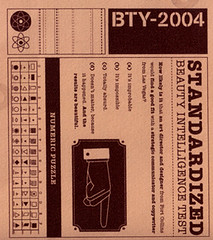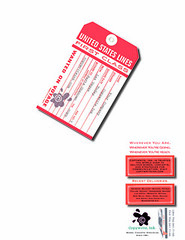When I originally started this blog in 2005, I intended it to provide supplemental information for the class I teach every spring for the Division of Educational Outreach at the University of Nevada, Las Vegas (UNLV). With the 11-week course beginning again this Jan. 19 (7 p.m. to 9 p.m., Thursdays), I realized it was time to et back to basics and end my blog hiatus.
For anyone interested, the course, Writing for Public Relations, is a skills development class that emphasizes the application of practical writing and strategic communication skills to real-life case studies and experience. I also stress the importance of approaching public relations from a journalistic perspective. The class carries 1.80 continuing education credits. For more information or to register prior to Jan. 18, visit unlv.edu or call UNLV at 895-3076.
As for the hiatus, the only explanation I can offer up is that our company has had a very busy holiday season, which seems to be a promising precursor for our 15th anniversary. Right. Copywrite, Ink. turns 15 this year. Our new web site may still in development because I'm infusing an interesting proportion/composition concept into the design, we have been quietly nurturing some quality accounts and producing some results-oriented communication materials: print, electronic, and behind-the-scenes strategic. Some of these projects will be highlighted in our electronic portfolio upon its completion.
For anyone interested, the course, Writing for Public Relations, is a skills development class that emphasizes the application of practical writing and strategic communication skills to real-life case studies and experience. I also stress the importance of approaching public relations from a journalistic perspective. The class carries 1.80 continuing education credits. For more information or to register prior to Jan. 18, visit unlv.edu or call UNLV at 895-3076.
As for the hiatus, the only explanation I can offer up is that our company has had a very busy holiday season, which seems to be a promising precursor for our 15th anniversary. Right. Copywrite, Ink. turns 15 this year. Our new web site may still in development because I'm infusing an interesting proportion/composition concept into the design, we have been quietly nurturing some quality accounts and producing some results-oriented communication materials: print, electronic, and behind-the-scenes strategic. Some of these projects will be highlighted in our electronic portfolio upon its completion.





















